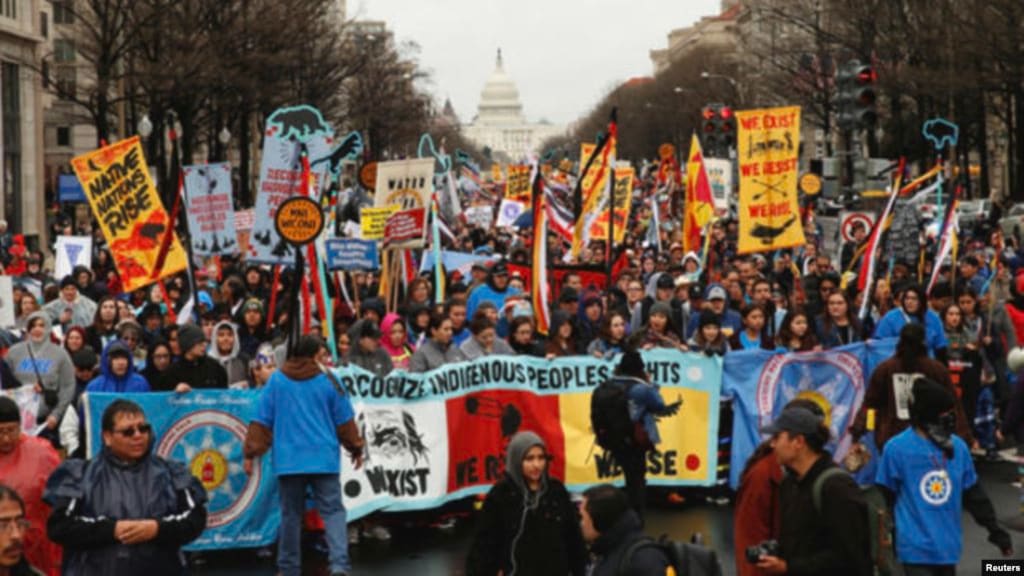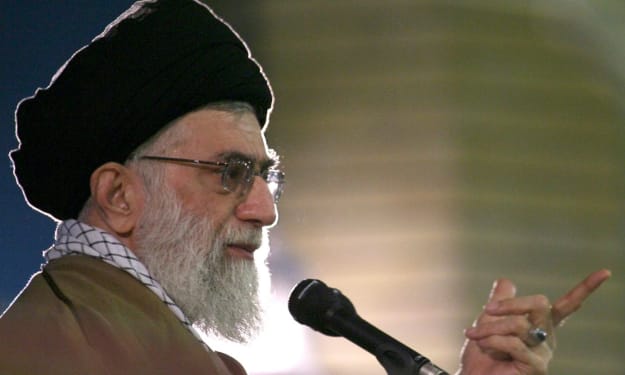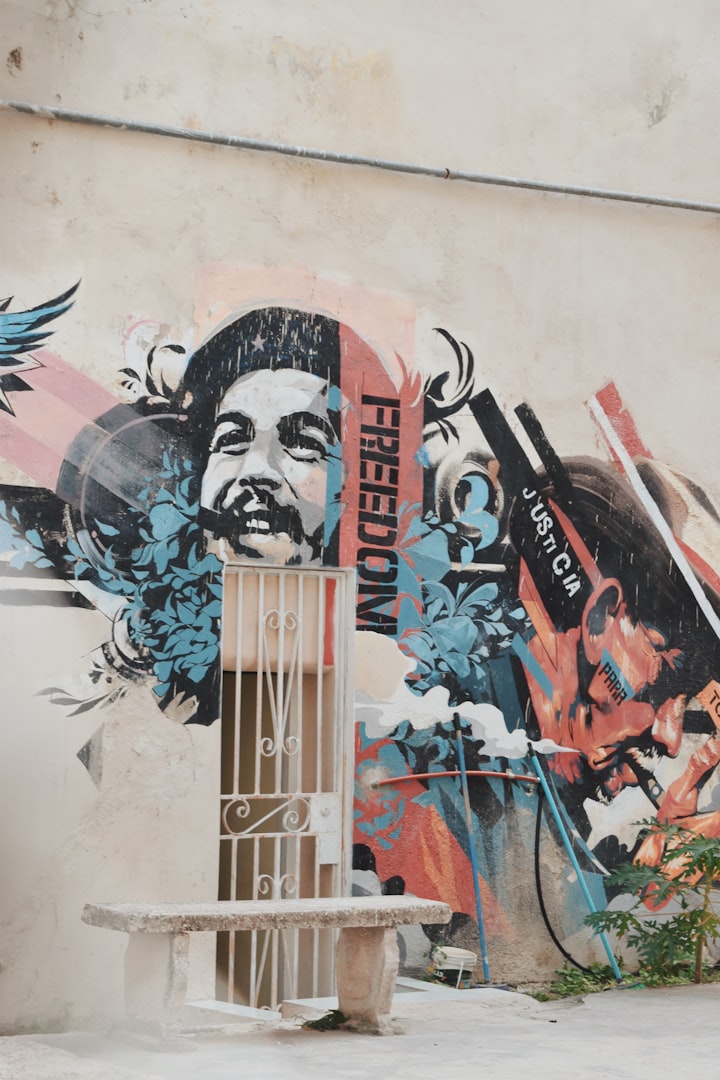Indigenous Peoples Are Under Attack
Part One: Police Violence, ICE, and The fight to Protect the Land, Water, and Sacred Spaces.

Indigenous struggles go under-reported, mostly because they are either outside of the mainstream media’s focus, or because topics that should be talked about as Indigenous issues are not labeled as such due to the colonial definitions of who counts as Indigenous. Just the inner workings of who is seen as Indigenous from our media, and who isn’t, is another in-depth article. From police killings of Native people during an “independence day” celebration to the concentration camps holding Indigenous peoples that mainstream media does not recognize as Indigenous peoples. The media often doesn’t tell the stories in the context that we need them to be told in. Removing or overlooking Indigenous identity from some of these stories aids in the erasure of our communities. From the Island of Hawaii and Borikén (Puerto Rico) to the settler-colonial borders and throughout Turtle Island (the "Americas”) our community is fighting to save the earth and our people.
State Violence against Indigenous people:
500 years of settler-colonial violence have shaped the way people see Indigenous and Black bodies here on this land. It has built a system which has foundations in that of slavery and genocide, it’s a system of law and its enforcement of that law is rooted in the violence towards Black and Brown bodies. This oppressive system has a long history of locking up and violently killing BIPOC (Black, Indigenous, People of Color) in this country. The methods have evolved, but it’s still the same violence. We have regular instances of police brutality being documented now, and being shared on social media. We have established concentration camps holding Indigenous people on stolen Indigenous lands. For crossing settler-colonial borders that have criminalized, demonized, and disconnected our Indigenous families. Some tribes near the US and the arbitrary Mexico border have relatives on both sides, tribes split apart from each other. The brutal methods have changed but the targets have not.
Activist groups in the more recent years have been researching what communities are impacted the most by state violence. Some communities have been left out or are under-reported. One of the reasons why Native American rates go under-reported is because officials sometimes do not label victims as Native Americans. Since most people have a vague understanding of who modern Native peoples are, our people in these reports get under-reported. A report from CNN says “In 1996, American Indian mortality rates were underreported by an estimated 21 percent, because of major inconsistencies in identifying Native Americans on death certificates, according to the CDC.” This is a contributing factor to why violence against Native peoples isn’t often discussed at the National level. Native Americans are in the top three. The Top three are Native Americans, African Americans, and Latinx. Take notes that these numbers do not count biracial people who maybe be Black and Native or Latinx folks who are Indigenous to these lands, or Latinx folks that are biracial. Native folks also go underreported, because of where our communities are. While A lot of Native people live in cities now, we still have a number of our people in rural areas. For Native Americans in the most recent studies says that we are 3.1 times more likely to be killed by police. This report did not include the numbers from the recent growth in ICE arrests of Indigenous families.
Recent State Violence against Native Peoples: Police shootings and The violence of ICE and Concentration Camps.
On July third in Poulsbo, Washington, which is 33 miles northeast of Seattle, folks were gathered at Waterfront Park for a fireworks celebration for the fourth of July. Around nine PM a Poulsbo Police Officer whose identity still has not been released shot and killed 39-year-old Stonechild “Stoney” Cheifstick a father of five and tribal community member (Chippewa Cree Tribe of Montana with a family connection to the Suquamish Tribe). The reports say that Cheifstick had a screwdriver, and was threatening people with it at the celebration. The police say they felt threatened by Cheifstick and his Screwdriver, and were worried about him harming others. So instead of practicing de-escalation, and disarming Cheifstick of his screwdriver, they shot Cheifstick at close range in the head and placed him in handcuffs until the medics arrived and pronounced him dead. Some say there was only a struggle with the police, and there wasn’t a screwdriver, other reports say Cheifstick threatened people at the celebration with the screwdriver.
Regardless of the presence of a screwdriver or not, this man did not deserve to die. Police are not trained to disarm or to deescalate situations. They are not trained to used non-deadly force on Black and Brown bodies. Stories like Cheifstick’s are common in Black and Indigenous communities. There are countless examples of Police killing unarmed Indigenous people, and in too many of these cases, mental illness plays a role in how the police handle these situations. Police are not trained to help individuals with mental illnesses. They are trained to react and kill. Police officers will feel threatened, or misidentify a non-deadly object, and instead of using non-deadly tactics, Black and Indigenous communities suffer at the hands of those who are supposed to “protect” us.
When a group of people has been violently dehumanized for hundreds of years, and constantly painted in a violent and negative lens, it allows for this type of violence to take hold and continue. It's systematic, this is how the system was created to work. It cannot change, it can only be dismantled.
Our relatives from Central and South America are under attack right now, they are being locked in cages and being treated horrendously. These concentration camps are currently holding Indigenous families; Indigenous people are living in fear as Trump calls for ICE raids to take place in major cities across the country. Indigenous people are once again being hunted and placed in camps. This fight is multilayered, and needs to be addressed on all sides. One problem is that these camps, like the rest of the prison industrial complex, make a lot of profit from holding people in cages. Billions of dollars are being made from the suffering of other human beings. Another problem is the United States government does not acknowledge their connection to these lands. This is an issue that even Native people who live in areas where ICE raids aren't taking place, where Native citizens who have “United States citizenship” are being targeted as well. Our documented community members also have to worry about being racially profiled. People have been stopped by ICE Just on looks alone. It’s reminiscent of when our ancestors had to show the soldiers and town police your Native American ID number of where you lived, and how long a person would be “off the reservation.” For example, some of these camps once held Japanese citizens that were labeled as the enemy during WWII, and before that, they held Apache prisoners.
The protest was recently held at Fort Sill, Oklahoma to protest the Trump Administration’s announcement of opening an emergency detention center at the Army’s Fort Sill in Oklahoma. Fort Sill has been around since 1869; it once held Geronimo and his family along with the families and warriors that fought alongside him. It was also a boarding school for Native children, stolen from their families. A boarding school that abused and neglected Indigenous children. And During world war two, over 700 Japanese men were held here. Fort Sill is the perfect example of how the United States government has treated people of color. Fort Sill is the legacy of the brutal treatment of both Indigenous and Immigrants alike. It’s the forgotten legacy of 500 violent years of creating these political systems that continue these terrible atrocities. It’s the example that this tactic did not start with Trump or his corrupt administration or his supporters. Its always been here.
In light of Trumps, most recent push for ICE raids in large cities across the country, along with the newest video and photos of the horrendous conditions this government has people living in, there has been a renewed movement to #CloseTheCamps by various organizations and activist groups. #NeverAgainIsNow has been doing actions almost daily at detention centers shutting down access to these centers. On July 16th allies shut down Ice headquarters demanding that the government #AbolishICE. Activists raised money to help bail out individuals from these centers, and shared information that will inform our neighbors about ICE raids. This level of involvement and solidarity needs to continue. This issue cannot fade or drop from the public view again, after the announcement that the United States government “lost” Children that were taken from their families at the border, the public response was huge and outrage was high—everyone was talking about it, there were demonstrations and speeches made about saving the children. Months went by and this issue began to fade. Not until more reports were leaked exposing what we now know about these “detention centers” did more people become activated again around this issue. We can not allow that to happen again.
The fight to protect our sacred places:
The fight to save our land, water, and our most sacred places has always been one of the things that we have to deal with as Indigenous people, not just here in the “Americas,” but also around the world. Our communities are on the front lines fighting for the future of the next generations on this planet. Some of our communities are already feeling the effects of global warming. We are seeing the seas change and harm our fish and whales. We are seeing the sea levels rise and threaten our villages. Our fights are against corporations and governments that value money over clean land and water, but most importantly they value money over Indigenous lives. As indigenous people we are apart of the land, My blood, my bones are made out of the pacific ocean and the rocky mountains. Generations of our people have lived on these lands since time immemorial. And we have been fighting this part of our genocide for over 500 years. From the Spanish invaders in the 1400s looking for gold, to oil companies that buy governments for pipelines, this too hasn’t changed.
In 2009 a $1.4 billion dollar price tagged giant telescope (TMT) was given the green light to begin development on top of Hawaii's most sacred places in all of the Hawaiian islands Mauna Kea. The fight for Mauna Kea or “Mauna O Wekea.” The first action held by protectors happens in 2014 when they interrupted the groundbreaking for the project. Since then Indigenous Hawaiians have been fighting for their most sacred space, their fight is a fight against the cultural and spiritual genocide of Indigenous Hawaiians. Mauna Kea to Indigenous Hawaiians is the home of their Gods including the mountain deity Waka. Where they want to build the telescope is considered Kapu (forbidden) by Indigenous Hawaiians, this space was reserved for high-ranking chiefs, and priests were allowed in the space. Now, this fight has been going on since then, Indigenous Hawaiians have been putting their bodies on the line to protect Muana Kea, July 15 protectors chained themselves together in the road, and elders braced for arrests that were reported to take place later in the week. On July 17th early in the morning, the announcement came that arrest was going to start in the morning. Protest organizer Andre Perez said “We are here on the slopes of Mauna Kea doing what is necessary to protect our land, our sacred space, and this is what it comes to for Hawaiians—that we have to get our kupuna arrested for the world to see that we have a voice, that we have a face, that we exist as a people,” 33 were arrested that day, most of the people who were arrested were Kupuna (elders). Indigenous elders have always shown us how to lead from their actions.
From Mauna Kea to fights here on the mainland against oil pipelines, our Elders have shown us what it takes to protect the most sacred. Even though arrests were made, I don’t believe that the protectors of Mauna Kea are going to quit trying to protect this sacred place.
Some people have said that this “protest” is against science. That is simply not true, Our people have always been scientists, Indigenous peoples all over the world have contributed to all fields of science. From studying the stars to brain surgery, Indigenous people have been contributing to the sciences for thousands for years. We are still doing this work today, trying to find ways to help our committees and the world. However, Science that removes or disregards the Earth or our people shouldn’t be allowed. Science should be rooted in respect for all, for the Earth, and for the people who will be impacted by these experiments. Western Science removes this connection from research, because they think that these ideas stunt scientific growth. When in fact it does the opposite, it opens the doors for more discussion, and for more scientific conversations to happen. As of 2012, there are over 13 scientific facilities that are already on top of Mauna Kea, instead of using that 1.4 billion to destroy a sacred space, and the trust of Hawaiian people, they could use it to make sure those facilities are up to date, and improvements to existing telescopes could be made. Until a compromise can be made, or they leave the mountain, the fight for Mauna Kea will continue.
The Pacific Northwest and Western Canada are dealing with the plans of Canada’s Prime Minister Justin Trudeau who recently okayed the expansion of the Trans Mountain Pipeline days after declaring a “state of emergency” in Canada. The Trans Mountain is going to take the highly corrosive Alberta tar sands oil to British Columbia. This pipeline, and the extraction for tar sands oil goes against the wishes of many First Nation communities. Many of them have been fighting this pipeline and others for many years. This pipeline put every Indigenous community in its path in danger. This pipeline is a violation of the treaties that some Nations hold with the Canadian government, this pipeline also violates the rights of unceded territories. The Unist’ot’en Camp in Wet’su wet’en territory which is unceded land, has been fighting against the creation of this pipeline for years. Now that it has been given life by Trudeau, the arrests were made at the Unist’to’en camp on January 8, 2019. RCMP went into the Unist’ot’en camp and arrested 14 people. the police breached the Gidimt’en (another clan in Wet’su wet’en Territory) checkpoint. The RCMP were fully armed when they arrived, they even smashed down the checkpoint gate. The RCMP were enforcing an injunction that was issued by the BC Supreme Court. This injunction and the arrests that happened that day, and during the days that followed at support actions throughout the region, proves that the Canadian government has little interest in real relations with our people. That the sentiments of reconciliation that Prime Minister Justin Trudeau spoke so passionately about, were more false promises. On July 12, 2019, government officials in Alberta said that they would appeal the most recent action to stop the expansion of the trans mountain oil pipeline. As the Trans Mountain Pipeline continues in its development, Our Nations that will be affected are getting ready for the next steps we will take to protect our land and inlet waters. Our Nations, Clans, and communities are starting to organize. I hope they are ready, we are not going to give up any time soon.
First Nations peoples are not alone in our fight against pipelines, and the greed of settler governments.
In Brazil, the Yanomami are fighting against the anti-Indigenous policies of the far-right president Jair Bolsonaro. The Yanomami have been fighting against gold mining for generations. Thousands of gold miners invaded Ynamoniami park in the 1980s and 1990s. Alongside with the Yanomami, the Ye’kwana a small group that lives alongside the Yanomami have also been targeted by these past and present efforts to mine their land. With Jair Bolsoaro in power in Brazil we must stay vigilant, and keep our eye on what his policies will do to Brazil's Indigenous, Black, queer and poor. He is going to cause a lot of damage before he's out.
In Ecuador, the Waorani people of Pastaza have been fighting against oil drilling on their lands in the Ecuadorian Amazon rainforest. Their lawsuit against the Ecuadorian government gained the support of celebrities on social media, with this media coverage, the Waorani people got the support and international coverage of their fight to save the rainforest. On July 13, 2019 Waorani people won their lawsuit against the Ecuadorian government that tried to sell their land to oil companies. They were able to save half a million acres of their territory, however, seven million more acres that are home to other Indigenous people are at risk for oil drilling. With the Waorani people wining this legal fight, it sets a new precedent in the fight for the rainforest. We can only hope that the next stage of this fight will be covered by the media with the same level of enthusiastic support.
Our communities are on the frontlines of fighting against climate change. Most of the drilling, refining, and pipelines run through native communities. If you look at what neighborhoods in the cities where they ship the toxic leftovers from making oil called "petcoke" it's mostly dumped in Black, Brown, and poor neighbors. The communities that are feeling the effects of climate change are native peoples'. Right now wildfires are raging in Alaska; we have seen wildfires become common in the pacific northwest. The seas are becoming harmful to sea life. As we continue to see these climate events unfold, our fight to protect the land and water must also grow. Communities on the frontlines for fights for Mother Earth need outside support. Donating funds for legal fights is one of the biggest ways to support these fights. Also sharing any stories covering these actions, especially the reports written by Indigenous people.
These are only some of the ongoing struggles that my people are fighting against. In part two of this article, I will talk about the recent news regarding MMIW (Missing and Murdered Indigenous women), and the fight against corrupt governments and Native Americans along with the upcoming 2020 Presidential elections in the United States. Along with some quick notes on how to be an ally to Indigenous, and other marginalized people.
Like and subscribe to my blog to get the latest articles first. You can find the link on Facebook here.
Support content creators by sharing our articles, or giving a tip if you feel like we did a good job.






Comments
There are no comments for this story
Be the first to respond and start the conversation.